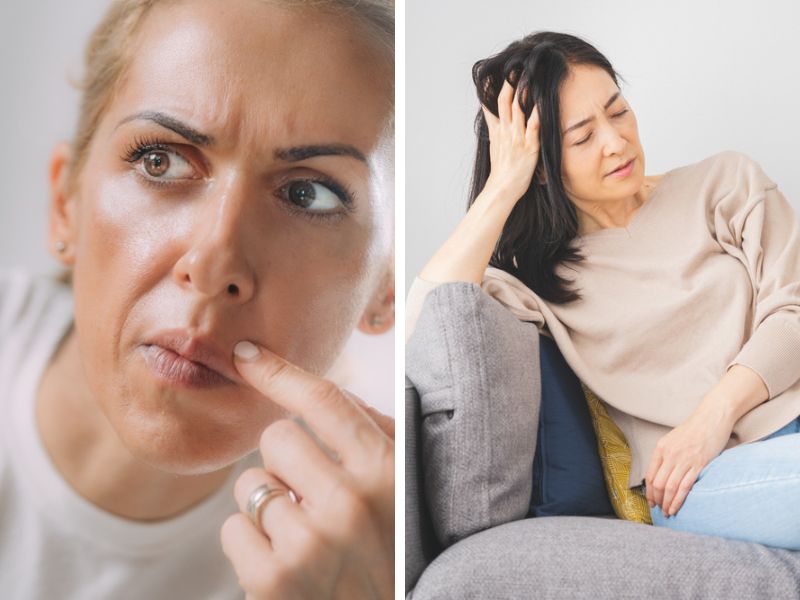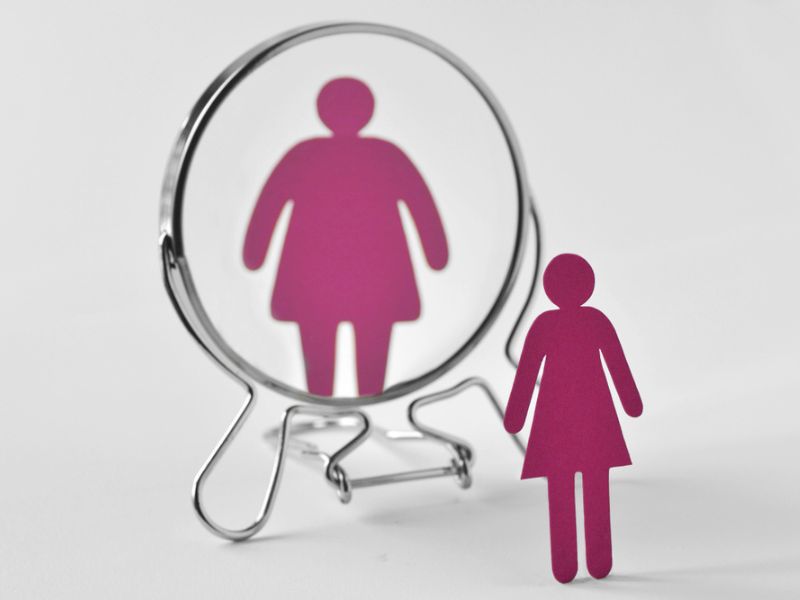Body image is the perception an individual has about their physical appearance. It is the way they see themselves and their beliefs about their body. While having a positive body image can boost self-esteem and mental well-being, a negative body image can lead to distress, anxiety, and even mental health disorders such as Body Dysmorphic Disorder (BDD).
Body Dysmorphic Disorder is a mental health condition in which an individual becomes excessively preoccupied with a perceived flaw in their physical appearance. They may spend several hours each day trying to hide or fix the perceived weakness, which can significantly impact their daily life and well-being. BDD often leads to social isolation and low self-esteem and can interfere with daily activities such as work, school, or relationships.

Image Credit: Shutterstock/Microgen & Shutterstock/chaponta
On the other hand, poor body image refers to a negative perception of one’s physical appearance, which is common among individuals, especially teenagers and young adults. Poor body image can arise due to societal expectations, media portrayals of the ideal body, bullying, and past experiences. While poor body image can cause distress and affect self-esteem, it is not considered a mental health disorder.
So, How Can One Differentiate Between Bdd And Poor Body Image?
One significant difference between BDD and poor body image is negative thoughts and behavior intensity. Individuals with BDD tend to have obsessive thoughts about their perceived flaws and may engage in compulsive behaviors to hide or fix them. In contrast, individuals with poor body image may have negative thoughts about their appearance, but these thoughts are not obsessive or impairing their daily life.
Another difference is the perceived flaw itself. Individuals with BDD tend to focus on one or a few specific body parts, whereas individuals with poor body image may have negative thoughts about their overall appearance.

Image Credit: Shutterstock/CalypsoArt
BDD, on the other hand, requires a mental health professional to diagnose. At the same time, poor body image is a common experience that can be addressed with self-help strategies such as practicing self-compassion, engaging in positive self-talk, and surrounding oneself with supportive individuals.
Despite its distressing effects, poor body image is not a mental illness. In contrast, BDD is a severe mental health condition that requires professional diagnosis and treatment. It is essential to seek help if you or someone you know is experiencing symptoms of BDD to prevent further deterioration of mental health and well-being.